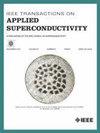Exploring Operation Limits of JT-60SA Cryomagnet Operation: Integrated Commissioning Database Use for Modeling Analysis
IF 1.7
3区 物理与天体物理
Q3 ENGINEERING, ELECTRICAL & ELECTRONIC
引用次数: 0
Abstract
In the framework of international development on fusion devices, the tokamak JT-60SA was equipped with superconducting magnets within a Europe-Japan collaboration. After a first integrated commissioning (IC) in 2021, another IC was conducted in 2023 reaching magnet energization levels compliant with 1 MA-class plasmas. The Toroidal Field (TF) coil system was loaded at nominal current and the Poloidal Field (PF) at 50% of nominal current. In the 2023 IC various energization pulse patterns were applied on PF coils to gain experience on the magnets control and protection system in operation conditions. Some tailored current pulses were applied to learn about PF coils coupling parameters and protection system, which sensitivity was found to be improved. In this environment, we developed tools and methods to model and predict the magnets behaviour to possibly identify coils limits in operation conditions. First step is with thermo-hydraulic evaluation of PF coil temperature safety margin evaluation along their pulsed current patterns. Second step is a first order analysis of the TF quench detection system sensitivity, found higher than expected to PF transients, and the contribution to possible mitigation measures to avoid spurious false positive detections. Both steps were benchmarked against experimental data collected during 2023 IC to consolidate models prediction capacities. Foreseen applications aim at checking plasma scenarios repetability rate or avoiding pulsed coil current to generate apparent fault signal in absence of real risk (mostly quench). The tools and methods are described and their rationales explained, together with their intrinsic limits and room for improvement.探索JT-60SA低温磁体运行极限:集成调试数据库用于建模分析
在国际核聚变装置发展的框架下,托卡马克JT-60SA在欧洲和日本的合作中配备了超导磁体。在2021年进行了第一次集成调试(IC)后,2023年进行了另一次集成调试,达到符合1ma级等离子体的磁铁通电水平。环形场(TF)线圈系统以标称电流加载,极向场(PF)系统以标称电流的50%加载。在2023型集成电路中,对PF线圈采用了不同的通电脉冲模式,以获得运行条件下磁体控制和保护系统的经验。采用定制电流脉冲对PF线圈的耦合参数和保护系统进行了研究,提高了灵敏度。在这种环境下,我们开发了工具和方法来模拟和预测磁铁的行为,以可能识别线圈在操作条件下的极限。第一步是对PF线圈沿脉冲电流方向的温度安全裕度进行热液评估。第二步是对TF猝灭检测系统的灵敏度进行一阶分析,发现对PF瞬态的贡献高于预期,并提出了可能的缓解措施,以避免误报检测。这两个步骤都以2023年IC期间收集的实验数据为基准,以巩固模型的预测能力。可预见的应用旨在检查等离子体场景的可重复性,或避免脉冲线圈电流在没有实际风险(主要是淬火)的情况下产生明显的故障信号。描述了工具和方法,解释了它们的基本原理,以及它们的内在局限性和改进空间。
本文章由计算机程序翻译,如有差异,请以英文原文为准。
求助全文
约1分钟内获得全文
求助全文
来源期刊

IEEE Transactions on Applied Superconductivity
工程技术-工程:电子与电气
CiteScore
3.50
自引率
33.30%
发文量
650
审稿时长
2.3 months
期刊介绍:
IEEE Transactions on Applied Superconductivity (TAS) contains articles on the applications of superconductivity and other relevant technology. Electronic applications include analog and digital circuits employing thin films and active devices such as Josephson junctions. Large scale applications include magnets for power applications such as motors and generators, for magnetic resonance, for accelerators, and cable applications such as power transmission.
 求助内容:
求助内容: 应助结果提醒方式:
应助结果提醒方式:


